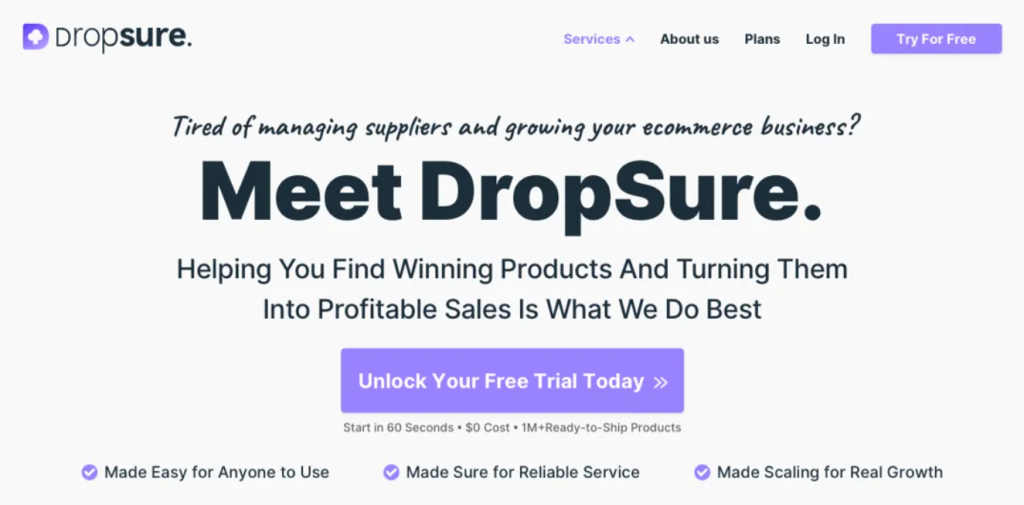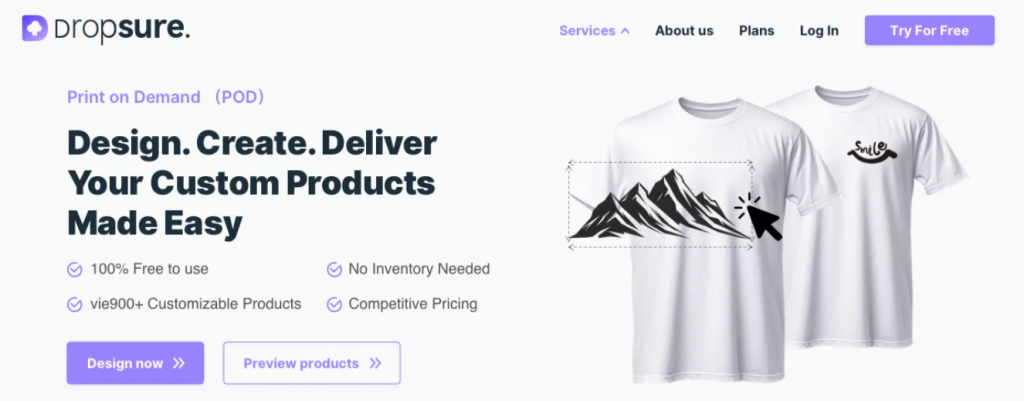You’ve likely heard of Dropshipping and Amazon FBA. Both are popular e-commerce models with their own pros and cons. But did you know Dropsure combines the strengths of both while fixing their common problems? In this article, we’ll dive into Dropsure and show how it offers a more flexible and efficient solution for sellers.
What is DropSure?
Dropsure isn’t just a basic logistics platform. It provides full support for e-commerce sellers, allowing you to scale your business without upfront inventory costs. You can easily manage your product supply chain, ship orders from 10 global warehouses, and offer fast delivery to customers. Essentially, Dropsure brings together the benefits of Amazon FBA and traditional dropshipping, while removing many of the challenges.

How does DropSure work?
Using Dropsure is simple, especially if you want to manage your brand while keeping logistics costs down. No need for pre-purchased inventory, so you won’t worry about unsold stock or high storage fees. With Dropsure, orders are quickly shipped from warehouses to customers worldwide.
You also get custom branding options, so you can add your logo to packaging, boosting brand recognition. Our smart stocking solutions help you avoid common supply chain risks, ensuring products are shipped on time when customers need them.


To help you better understand, check out the comparison chart below, which highlights the key differences between Dropsure, Amazon FBA, and traditional dropshipping.
| Feature | Amazon FBA | Dropshipping | DropSure |
| Upfront Investment | ❌ High startup cost, inventory needed | ✔ No upfront investment, pay as you go | ✔ No upfront cost, inventory managed by suppliers |
| Inventory Management | ❌ Requires pre-purchased inventory | ✔ No inventory needed, ship as you sell | ✔ Suppliers handle inventory, ensuring fast delivery |
| Order Fulfillment | ✔ Amazon handles fulfillment | ❌ Manual handling, but can use automation | ✔ Efficient fulfillment, suppliers handle shipping |
| Advertising | ✔ Built-in Amazon advertising | ✔ Flexible, use any platform (e.g., Meta ads) | ✔ Multi-channel marketing, customizable ad solutions |
| Profit Margins | ✔ Discounts for bulk orders, but high fees | ❌ Higher product costs but no fees | ✔ Optimized pricing, lower overall costs |
| Customer Contact | ❌ No direct contact with customers | ✔ Full control over customer interaction | ✔ Direct customer engagement and brand loyalty |
| Customer Base | ✔ Access to Amazon’s customer base | ❌ Need to find your own customers | ✔ Integrated customer database, helps grow your base |
| Control | ❌ Limited control, Amazon handles everything | ✔ Full control over your business | ✔ Full control with added support for scaling |
| Scalability | ❌ High costs to scale, limited flexibility | ✔ Easy to scale, especially for new businesses | ✔ Seamless scaling with global warehouse network |
| Risk | ❌ High risk with inventory investment | ✔ Low risk, no inventory holding | ✔ Low risk, no upfront inventory costs, flexible supply |
By reviewing this, you’ll see how Dropsure combines the best of both worlds—offering lower costs, flexibility, and control, all while helping you expand your business.
Is DropSure Legit?
A common question is whether Dropsure is trustworthy. The answer is yes. We understand the struggles sellers face with supply chain management. Dropsure ensures your products meet customer expectations through strict quality checks and reliable suppliers. You can focus on growing your business without worrying about shipping issues or inventory.
Is DropSure Really Free to Use?
Yes, Dropsure is completely free. Unlike other platforms that charge monthly fees or startup costs, Dropsure offers its services at zero cost. This makes it perfect for new sellers who want to start or scale with minimal risk. You can use more of your budget for marketing and building your brand.
DropSure Shipping Service
Dropsure has 10 global warehouses, strategically located in China, the US, UK, Germany, Australia, and Brazil. This network ensures quick shipping times. In most cases, products arrive in 2-3 business days within those regions. Even in distant areas, delivery takes less than two weeks. Our efficient logistics not only improve customer satisfaction but also reduce shipping errors and delays.
DropSure Compensation Policy
If an order is delayed or lost, Dropsure offers compensation based on the order value. This gives you peace of mind, knowing your interests are protected. You can confidently focus on growing your business while Dropsure handles the logistics.
Whether you’re just starting or an established e-commerce seller, Dropsure provides a low-cost, high-efficiency solution. Amazon FBA might give access to a huge customer base, but its high fees and strict rules limit flexibility. Dropsure combines the flexibility of dropshipping with the brand-building potential of FBA, without the complications.
If you’re looking for a platform that helps you grow your brand while keeping costs low and logistics smooth, Dropsure is your best choice.
Ready to grow your business with Dropsure?
Sign up now and see how our platform can simplify your supply chain and boost your profits!

 5 min read
5 min read



